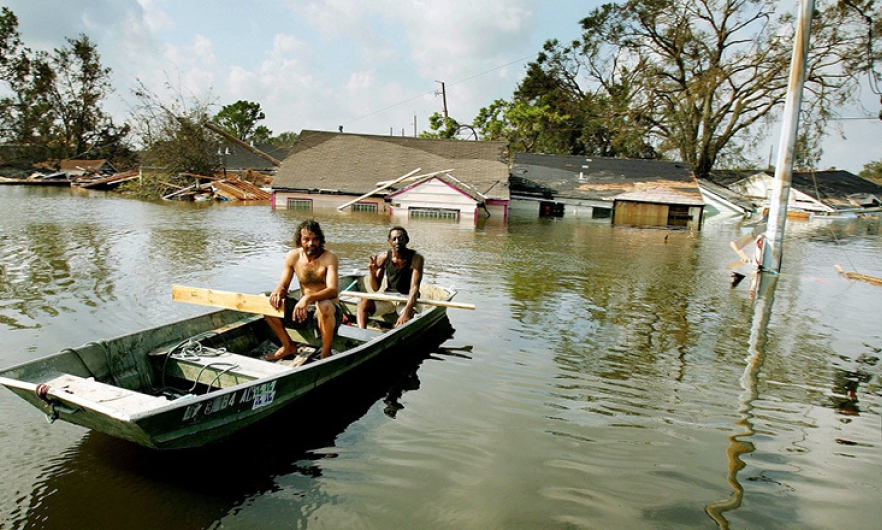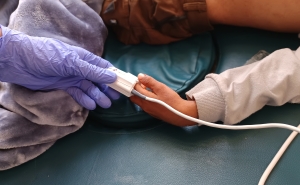Florida, FEMA, and Fugate

Emergency Management Lessons from Hurricane Katrina for Conquering COVID
Fifteen years after Hurricane Katrina struck Mississippi and Louisiana on August 29, 2005, nightmarish images of the Superdome’s squalor and terrified New Orleans residents on rooftops still sear our collective memory.
Katrina, in many minds, symbolizes a failed government response and a failed system to protect society’s most vulnerable.
There is, however, a far more positive yet less well known dimension to the Katrina response.
Even though Florida had been pummeled by three Category 3 hurricanes and two Category 4s in the year prior to Katrina, with more than 150 people dead and a record $22.8 billion in property losses, the governments of Florida and Mississippi created a mutual aid compact to supply essential surge capacity to areas devastated by Katrina. Created under the Emergency Management Assistance Compact system established in 1995, the Florida-Mississippi compact was the largest state-to-state mutual aid compact in U.S. history, with Florida providing $100 million of the total $346 million in state-provided mutual assistance to Mississippi.
The Florida-Mississippi agreement supported a unified command structure to support responders and logistics, which later evaluations identified as crucial to Mississippi’s response and a deficit in Louisiana’s. As the media highlighted the abject failures of hurricane relief in Louisiana, the Florida Emergency Management Division, under director Craig Fugate, demonstrated in Mississippi the right way to respond to an unfolding large-scale catastrophe.
Within hours of Katrina’s landfall, Fugate and Florida Governor Jeb Bush began deploying first responders to Mississippi. They even anticipated where resources would be needed and sent them in advance. Florida would ultimately contribute more than 5.5 million gallons of water, 4 million pounds of ice, and 934,000 cases of food.
Florida’s superior levels of planning, orchestration, and inter-agency cooperation across all levels of government, including the management of thousands of volunteers from across the state, can instill hope for future disasters—and the COVID-19 era.
Yet this feat took more than a decade of trial and error to achieve. After Hurricane Andrew, the monster Category 5 storm that hit Miami in August 1992, Florida’s fledgling emergency management team was baffled as donations poured in from around the country—much of it useless items such as blankets. There was no system in place to store, catalog, and distribute the supplies, so they sat unused, covering whole parking lots. Over a decade of hard work paid off: By 2004, Fugate was positioning extra fuel in advance to be available along evacuation routes.
Florida’s outsized role after Katrina earned Fugate his appointment in 2009 as director of the Federal Emergency Management Agency under President Barack Obama. He took an agency that had been universally maligned for its post-Katrina performance, particularly in New Orleans, and built it into one of the most trusted, nimble units in the federal government. At FEMA, as he had in Florida, Fugate prized advance planning and risk management, such as strengthened building codes. He convened multiple tabletop exercises every year to anticipate the effects of different scenarios. He also instituted thunderbolt exercises, where he walked into the emergency operations command center and announced surprise disaster simulations. Just before Hurricane Sandy battered New York and New Jersey in 2012, Fugate ensured that recovery resources were in place.
In Florida, Fugate had prioritized ensuring that the public understood the urgency and specific elements of hurricane preparation. When the media quizzed him on whether the state was prepared for the next season, he turned the tables and asked journalists if they had their storm shutters up yet and their emergency supplies in place. At FEMA, Fugate recognized social media’s potential for increasing public disaster awareness and introduced apps to support on-the-ground reporting with photos and GPS coordinates.
This is what successful preparation, response, and long-term follow-up to a catastrophic event looks like. What would it take for the U.S. to develop an epidemic preparedness culture as robust as Florida’s hurricane culture? It’s time that we invest to find out.
Karen Kruse Thomas, PhD, is the Bloomberg School historian.





